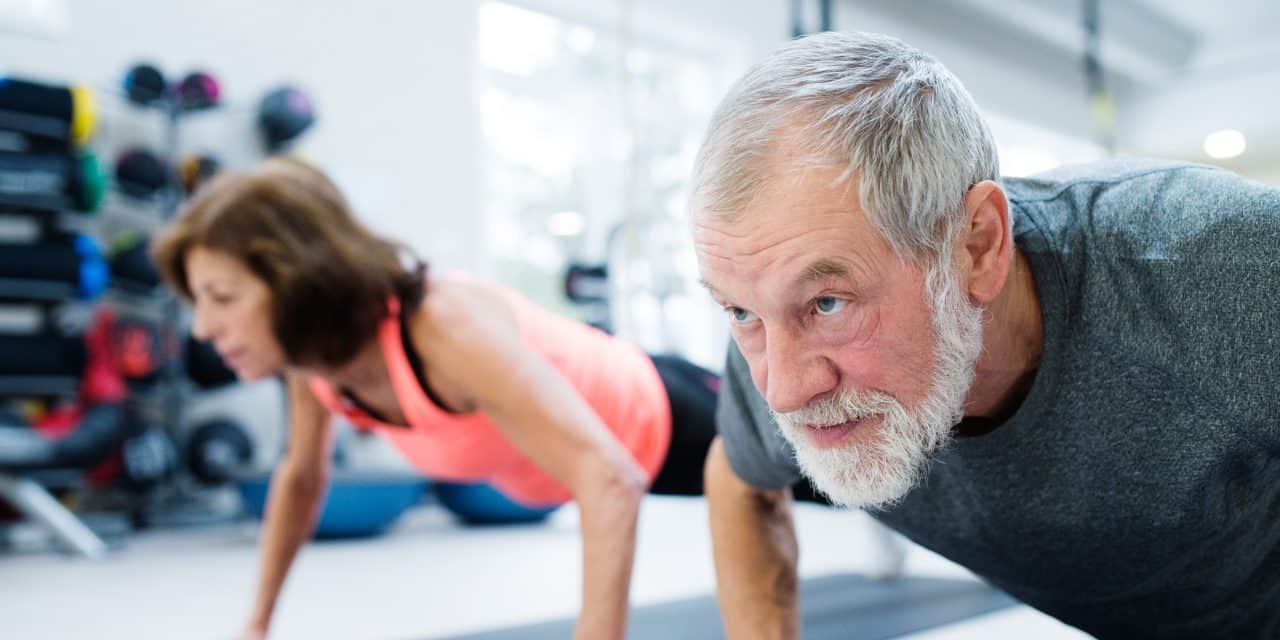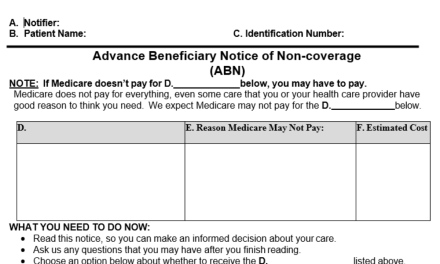
The One “Drug” You Need to Prescribe to Every Patient (Part 2)

This is the second part of a 3-part series on exercise and physical activity prescription within the chiropractic office setting. The first article can be found here.
The first part covered the following topics:
1. Exercise should be viewed as a “drug” with dose-dependent physiological effects;
2. Exercises have so many health benefits;
3. Exercise as a physiological intervention demonstrates cost-effectiveness, clinical effectiveness and has an extremely favorable benefit to risk ratio;
4. Consultation and prescription habits are lacking;
5. Medical training is insufficient to influence global awareness and prescription habits;
6. Exercise can and should be taken as a vital sign.
Part 2 will discuss simple recommendations to implement exercise/physical activity guidelines within the chiropractic office setting. We will also demonstrate select exercises.
We favor exercises that meet the following criteria:
1. Time-efficient;
2. Cost-effective;
3. Multi-joint (benefitting multiple areas of the body at the same time);
4. Provide variability;
5. Challenge the requirements of the sports, recreational activities or daily life tasks in which your patients want to engage;
6. Promote independence and self-confidence;
7. Don’t require additional pieces of equipment other than simple household items.
Incorporating Physical Activity Recommendations Into Your Practice
The biggest question you may have is, “How do I incorporate simple physical activity tips into my practice?” Below is a simple list of suggestions:
1. Make Exercise Habits a Vital Sign in your Practice:
Start by taking exercise habits as a vital sign on every patient during your new patient intake or returning patient intake. You are looking for the following general information:
a. Are you getting over 150 minutes of moderate or greater physical activity per week? Y/N
b. If no to the above question, how much activity are you getting? (circle one of the following) 0-30 min, 30-60 min, 60-90 min, 90-120 min, 120-150 min
c. What types of physical activity do you engage in? Fill in the blanks __________.
2. Offer a Tip Sheet:
Have a tip sheet for simple recommendations for patients to follow. The tip sheet can be a pamphlet, note pad, or be sent to the patient electronically in email or text format. Examples include:
a. App on Phone: Log into your app store and download a fitness app or pedometer. Track your daily activities or daily steps.
b. Fitbit: Purchase a FitBit from Amazon or the local sporting goods store. Track your daily activity patterns and shoot for 30 minutes/day 5 days/week (150 minutes/week) or > 7500 steps per day.
c. Pedometer: Have the patient purchase a pedometer to track daily steps.
d. Spreadsheet or Log Book: Create a spreadsheet or purchase a log book and track your physical activity for the next 30 days. Have your patients include the dates, amount of time exercising, activity type, calories burned, distances walked, heart rate (average heart rate, max heart rate), resistance (weight used) and sets/reps of resistance exercises.
3. Provide accountability:
Have your patient check-in monthly by providing statistics to your office on weekly physical activity levels. You can do this electronically or with an office visit. The benefit of an office visit also allows you to track height, weight, BMI, body fat % or other clinically relevant data. This helps in measuring progress and goal setting.
4. Establish Community Relationships:
a. Local Activity Groups:
Contact local walking groups, hiking groups, biking groups, kayak groups, running groups or other physically active groups in your community. You can readily find these groups with internet searches or on meetup.com. Introduce yourself to the group leaders. Mention that you want to network with the group so that your patients have an avenue to transition from the clinic into a positive social situation that promotes their health. This strategy is a win-win situation, as it can benefit your practice and your patients.
b. Personal Trainer:
Find a good personal trainer in your community. Some patients just don’t know where to begin to find one. Vet the personal trainers so that your patients don’t have to do so. Look for a personal trainer that understands the demographics of patients undergoing a medically, supervised physical fitness program. This means you are looking for a personal trainer with the following qualities:
i. Willing to work with a non-sports performance demographic;
ii. Willing to be a participant in the patient’s health care team (team player);
iii. Able to modify the patient’s training program based on current or past medical conditions, the patient’s goals, and ability levels;
iv. Understands scientific training principles, including movement assessment, periodization, specific adaptations to imposed demands (SAID), physiological adaptations to exercise (neurological, musculoskeletal, immune, metabolic, etc.) and safe training principles;
v. Willing communicator (able to communicate with the rest of the health care team)
vi. Has credentials separating himself/herself from other personal trainers
1. Movement Assessment Certifications: Examples include FMS or DNS-Exercise;
2. Degree: Bachelor’s or Master’s Degree in an exercise science-related field;
3. Personal Training or Strength Training Certification(s): NASM (National Academy of Sports Medicine), NSCA (National Strength & Conditioning Association – CPT or CSCS), ACSM (American College of Sports Medicine), ACE (American Council on Exercise); Experience working with fitness clients rather than performance clients;
4. Maintains ongoing continuing education to stay abreast of developments within the field;
5. Understands and can implement/consult on nutritional recommendations.
c. Other Community Relationships – Nutritionists, Functional/Integrated Medicine Doctors, Primary Care Physicians & Counselors:
Don’t forget that physical activity is a small component of health. Other important factors contributing to health and weight loss are nutritional, metabolic and psychological. It is wise to surround yourself with great professionals that can be consulted as needed to help your patients reach their health and exercise goals. This means reaching out and finding a good nutritionist, functional and integrated medicine physician, or psychologist. Reaching out to the patient’s primary care provider is also a great step toward helping the patient reach his/her goals. These professionals can help you overcome obstacles that stand in the way of success.
What General Exercises Should I Recommend to Patients?
You want a simple, yet challenging, program. You want a program that patients can follow at home. You want simplicity, yet variety. You want a program that translates into daily life, yet helps with performance when needed. How do you accomplish all this without making the patient’s head spin?
The following program is a model that can help you with exercise prescription. It incorporates movements that we utilize on a daily basis. Please note that the best policy is making exercise plans specific to the needs of your patients. There is no one best way of doing things. The model below is simply a template that has worked for me over the course of the past 19 years in health care.
The model incorporates the following concepts:
1. Warmup:
Prepare your body to exercise through a functional warmup. Components of a warmup include walking, jogging, biking, elliptical trainer, dynamic mobility work and self- myofascial release with foam rolling, lacrosse balls or other devices.
2. Breathe:
Breathing will help relax the body and prepare the mind for exercise. Breathing is also a core activation/core stability exercise further prepping your body for exercise.
3. Core Exercises:
Stu McGill, a leader in spinal rehabilitation and in sports performance, advocates core exercises (proximal stability) to improve distal mobility, athleticism, and ultimately performance. His 30+ years of work indicate that core training has a critical impact on spinal pain, daily task performance and athletic performance. A simple suggestion is to utilize his “Big 3” exercises of bird dog, modified side bridge and the curl up.
4. Push:
Multiangle pushing and pulling motions are daily tasks. Tasks such as putting an object on a shelf overhead (press) or grabbing an object from an overhead shelf (pull) are part of daily life. It’s wise to incorporate these movements and multiple angles in your program to train for daily life.
5. Pull:
See above.
6. Squat:
Getting out of a car, getting off the toilet seat, getting out of a chair, all involve squatting. Physicians shy away from recommending the squat due to concern that it will “kill the knees.” I don’t think we should fear the movement, because the reality is that the movement is so critical to everyday life. Let’s not instill fear in our patients. Let’s empower them by coaching this movement successfully.
7. Hinge:
Hinging movements are tailor-made to pick something up off the ground. Picking up a box or a bag of groceries from the ground could involve a hinging motion. This in effect is a deadlift. The name sounds scary, but the reality is that you are already doing it. Again, let’s not scare our patients. Let’s empower them. Learn to coach the hinge and coach the deadlift and you’ve empowered them.
8. Carry:
Simple examples include carrying a bag of groceries from the car to the kitchen or carrying a duffel bag in an airport. Carrying is a daily task that can be trained for daily performance or sports performance.
9. Cooldown:
Relaxing tension and tone with mobility work, stretching, self-myofascial release, assists in recovery so that patients can train hard all over again.
Conclusion
This is part 2 of a 3-part sequence on general exercise prescription. The first part focused on the physiological benefits and importance of exercise and physical activity. This part reviewed specific recommendations and laid out a format for fitness. The third part will cover specific exercises and a simple template program that you can use.

















